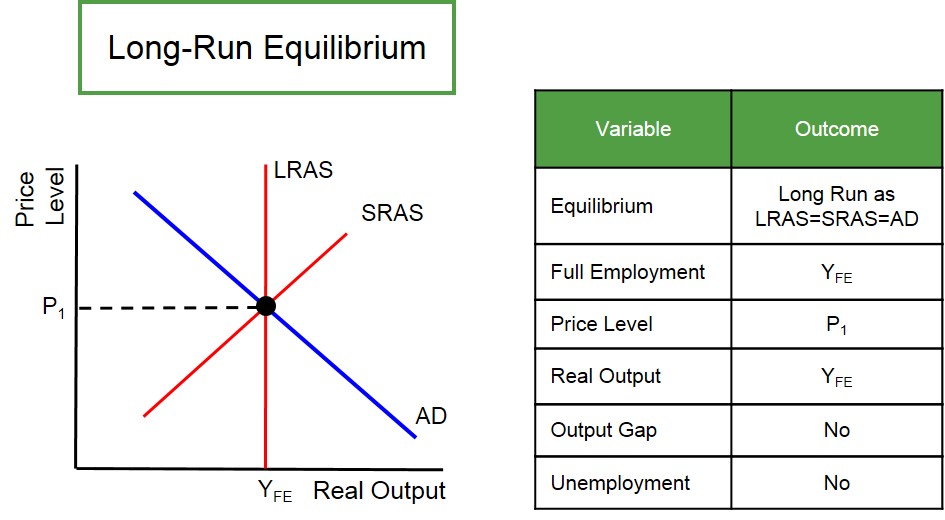The level of output where all available factors of production are being fully utilised.
Below is a diagram that shows when an economy is in equilibrium and no output gaps exist and the economy is positioned at the full employment output level. Any output level beyond the full employment level introduces inflationary pressures into the economy, because unless there is an outward shift in the LRAS curve, then there are too few resources to produce too many goods. Likewise if the output level falls below the full employment level then this will introduce deflationary pressures into the economy as now there are too many resources to produce the amount of goods and services required.
